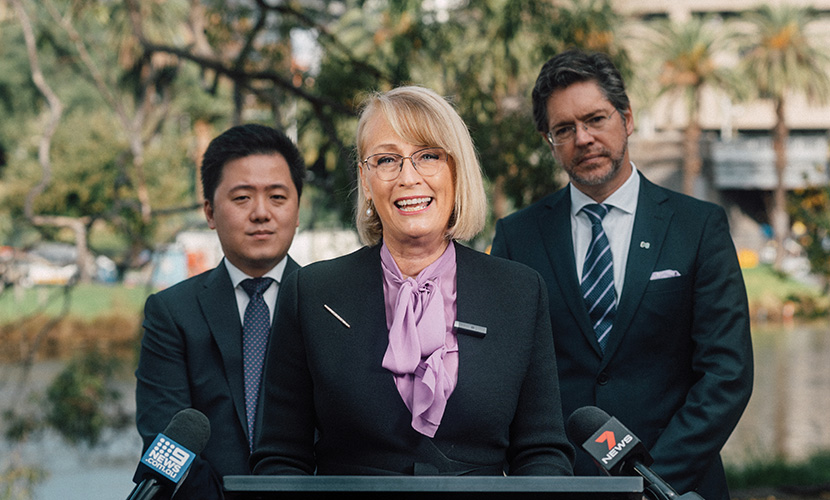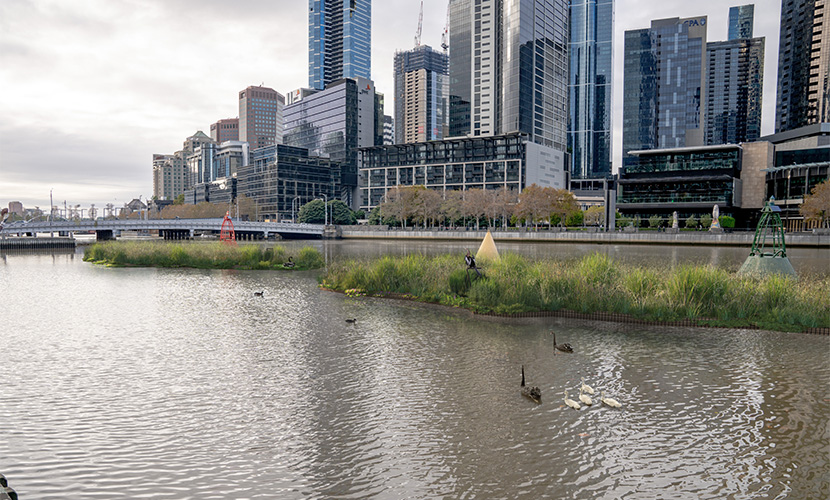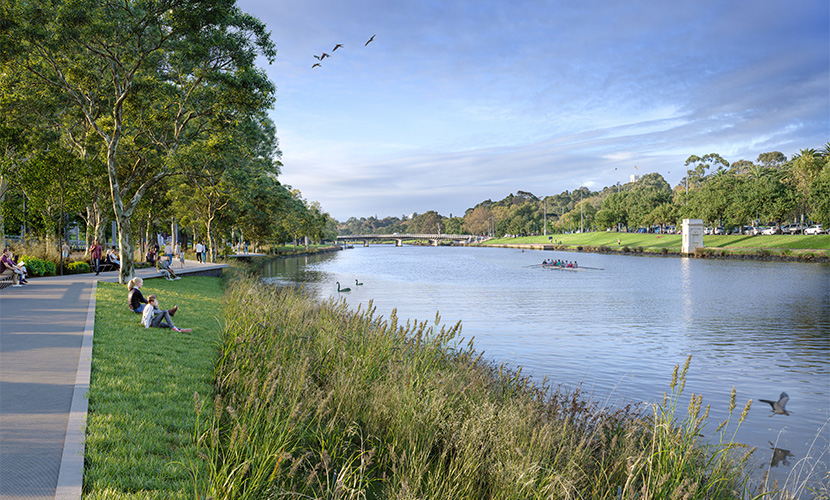
Open space pledge, Greenline, headlines budget as rate rise returns
Around $25 million will be spent on securing new open space in Southbank over the next four years, as the City of Melbourne released its latest budget that signalled a return to rate rises.
The council’s latest budget, released on May 17, also included a $40 million pledge over the next 12 months to the “city-shaping” Greenline project that proposes a four-kilometre walking and cycling trail along the north bank of the Yarra River.
The four-year, $25 million commitment to “acquire and develop new public open space in Southbank” further underlines the need for new green space in the area.
The suburb is one of the most densely populated in Australia (local population divided by land area), and the dearth of nearby public areas has been the source of angst among local residents for years.
The council has said Southbank was its “number one priority” when it came to new open space across the municipality.
At this stage it was unclear which specific areas it might target for new pocket parks.
The latest budget also included a further $5 million for the Dodds St linear park.
Overall, the council pledged a record $254 million infrastructure spend in the next 12 months, with Greenline — plus a further $50 million tipped into its biggest ever investment, the Queen Victoria Market precinct renewal — at its heart.
The $40 million Greenline commitment in the next year will be spent on delivering floating wetlands and begin transforming almost 600 metres of the river’s edge at Birrarung Marr.
The council has proposed funding one-third of the $300 million project and will push the state and federal governments to similarly contribute $100 million each.
The newly elected federal Labor government has pledged $20 million to kickstart work on the pathway, which would run from Birrarung Marr all the way to the Bolte Bridge.
However, the news wasn’t so good for local residents and businesses already concerned about the rising cost of living, after the City of Melbourne announced a 1.75 per cent rate rise — its first announced increase since 2019.
In 2020, within months of Melbourne’s first COVID-19 lockdown, the council announced a freeze on rate increases, while in 2021 it passed on a discount to both residential and commercial ratepayers that saved the majority of ratepayers between $10 and $50.
However, this year it opted to increase rates — which contribute around two-thirds of council revenue — in line with the rate cap rise announced by the state government late last year.
The City of Melbourne did, however, announce a rate discount of up to $247 for pensioners, which it said was the most generous in the state.
Across the municipality, the council’s latest budget featured a record $837.8 million council spend in the next financial year.
“This is a landmark budget that restores city confidence and continues to invest in Melbourne’s momentum,” Lord Mayor Sally Capp said.
We’ve designed a budget that delivers on what matters most – making our city cleaner, delivering more events and bringing people back to the city.
“We’re investing to grow our economy beyond pre-pandemic levels and create more jobs, more events and more amenities for our residents, traders and visitors.”
The council had expected to return to surplus in the upcoming financial year, but this has now been pushed back to 2023-24.
The underlying deficit announced on May 17 was $11.3 million.
According to the budget papers, this was due to the “unforeseen impacts of the Omicron variant and the sixth COVID-19 lockdown in 2021”.
The council’s bottom line, however, would be significantly bolstered by a projected $25 million increase in parking fines and parking fee income compared with the 2021-22 financial year. This was due to an expected rise in CBD visitation.
Cr Capp referred to “robust internal discussions” at Town Hall surrounding the budget and acknowledged the need to “tighten our belts as an organisation.”
“There’s a lot of pushing and shoving that goes on to get the best results we possibly can from what is still a tight financial situation at the City of Melbourne,” she conceded at a May 17 Future Melbourne Committee meeting held in Docklands.
However, the Lord Mayor said that despite this, the council was buoyed by the strong return of visitors during recent large-scale events such as the Comedy Festival, Formula 1 Grand Prix, AFL games and performances of Hamilton and Moulin Rouge! The Musical.
Cr Capp revealed that on the Saturday prior to the budget being released (May 14), the city had seen a 172 per cent increase on numbers on even pre-pandemic levels.
“We are getting our mojo back, and our events calendar has really driven a lot of that visitation and return to the city. It’s underpinned ‘COVID-caution’ turning into ‘COVID-confidence’ and we are seeing the results in our foot traffic.”
Greens councillor Rohan Leppert, while supporting the budget, was critical of investment in cycling infrastructure, which was considerably less than what has recently been committed in neighbouring states.
The Liberal NSW government recently committed $960 million over four years for active transport upgrades in Greater Sydney, while the recent Victorian budget included just $7 million for cycling.
Similarly, he said the City of Sydney recently committed $69 million over four years, which dwarfed the City of Melbourne’s recent budget allocation of $18.2 million.
“I’m going to support this budget, but I don’t think that’s enough,” he said.
“We have considered the last two years worth of active transport improvements in the City of Melbourne to be a peak, but we can’t consider it a peak — that needs to be the new normal.”
An emotional Cr Leppert, speaking on the same night a cyclist was killed at the intersection of La Trobe and King streets in the CBD, said further investment was crucial.
“If we are truly going to make the most of the finite road space in our municipality and make our streets as safe as they possibly can, we have to lift the spending on active transport to make the city safe for everyone.”
Community feedback on the draft budget can be provided on the Participate Melbourne website until June 14, before the final budget will be presented to the council for adoption on June 28. •

Revitalisation of Alexandra Gardens progresses

Build-to-rent development gets green light in South Melbourne








 Download the Latest Edition
Download the Latest Edition